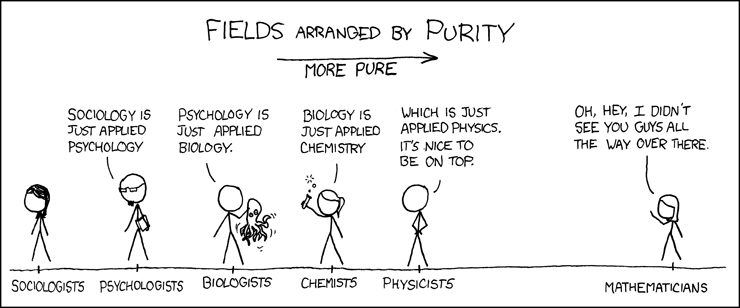- cross-posted to:
- [email protected]
- cross-posted to:
- [email protected]
Without using fancy components: Just simply adding a 6.2 and a 2400 Ohm resistor in parallel already gives you 6.18402 Ohm ⚡️
Real world resistors usually have a tolerance of ±5%, so you’ll never get anything that precise.
That’s why I keep a roll of 20 AWG nichrome on hand. Spool off 9.7195853528209 feet and it’ll be bang on.
So 1 inch of your wire would weigh ~0.0987 grams, so to measure down to 8.6350242338508 inches of wire your scale would need to weigh down to ~0.00000000000007 grams. Which is the weight of about a dozen atoms or so.
Yeah which is why you use a Kibble balance. Are you sure you’re cut out for this kind of work?
I’m not a scientist, I’m just in IT haha
I figured there was a way to measure that small of weight but I didn’t know!
Its akin to having an electon microscope in your kitchen
We move onto the next issue. How to precisely measure the length of the wire?
If you trust the gauging, you weigh it.
Eyeball it. Gotta squint right tho.
With an ohm meter?
With a 6 digit voltmeter
I’ve actually found 1% to be a lot more common nowadays.
Grab a box full and test a bunch until you find one that works well for your use case. That way you end up with a resistor that’s much better than the rated tolerance you’d get if you just grabbed one resistor at random.
Just put two π ohm resistors in series duh
Whats wrong with your 3!
Ugh, 3 factorial is most definitely not equal to π. It’s something more like, idk, 9? Honestly I don’t even know how I got here; I majored in Latin and barely past
Barely passed your English classes as well I assume. /s
They barely passed me.
My high school English teacher still has night terrors about me starting sentences with conjunctions. And that was the least of their problems.
Edit: kind of unrelated, but that song about conjunctions is now stuck in my head. 🎶Conjunction junction, what’s your function? 🎶
In case anyone wondering factorial is
n! = n * n-1 * n-2 * … * 3 * 2 * 1
Erm. In what world do you live that the precedent in your expression is right?
In all languages and countries I know multiplication binds more strongly than addition. So what you wrote would be
n^2 - n - 2n - 3n…
I wrote it correctly. It is the definition of a factorial.
No, correctly it would be n * (n-1) * (n-2) * … * 3 * 2* 1
Or the actual recursive definition
1! = 1
n! = (n-1)! * n
π = 1
3! = 10Isn’t 3 factorial equal to 6??
Seriously, if you’re working with analog electronics, 𝛑=√1̅0̅ is close enough. If you need more precision, use active error correction, and in the 21st century that’s easiest to do digitally anyway.
Well…
g1/2 = e = 3 = pi
e = π = σ = ε = µ = Avogadro’s Number = k = g = G = α = i = j = 3
(at least that’s how they all look when viewed from ∞)
I was not ready for this truth bomb
Shouldn’t have i in there, or j if you’re using that to represent the imaginary number. The complex plane is separate.
Let epsilon be substantially greater than zero…
The list of things I shouldn’t do, but do regardless, stretches past infinity.
Imaginary numbers are best understood as symbolizing rotation. If we’re imagining a number line here, “looking back from infinity” - at a scale where Grahams number looks like the mass of an atom expressed in kilograms, i would not be in that infinite set of numbers, it would be a point above that line and creating a perpendicular plane to it.
I hate the term “imaginary” because it’s misleading. Most high school algebra teachers don’t understand what they are either, so people learn about these things called “imaginary” numbers, never learn any applications with them, hopefully graph them at best, and then move on understanding nothing new about math.
Students also tend to get really confused about it as possibly a variable, (it’s really annoying with in second year algebra courses, where e and logs also show up). We say “ah yeah, if you get a negative sign, just pull it out as an i and don’t worry about it. or just say no real solutions.”
Numbers like that are why I quit majoring in mechanical engineering. Physics took the beauty of math and made it ugly.
You knew something was wrong in calculus when you got a fucked up coefficient that wasn’t a nice number.
Numbers like that should have been why you kept going in mech E.
Once you get past the educational stage, every one of those calculations becomes “OK now round to the closest whole number that gives you the larger factor of safety and move on”
The difficult part of engineering is figuring out what number you have to round then multiply by 1.2 or 0.8
Eh, it’s just fundamentally ugly to me and that really turned me off. Rounding doesn’t help, that’s like turning the lights off for sex to make it better. I still know the ugliness exists, even if I don’t see it.
Engineering is still very cool to me, and I have huge respect for those who do it, but I’d never have made it. It’s physics but even further perverted by reality. Math was beautiful to me because of how “pure” it was. Just straight logic, divorced from the messy world we live in. Tidy coefficients and elegant derivations.
I have to hard disagree with you there. The beauty of the math equations they test you with in school is completely artificially selected. The vast majority of math does not have nice neat solutions. There is a lot of it that doesn’t have any solution at all. The beauty of engineering is figuring out how much of things you actually need. You might calculate that some quantity should be an irrational number for some design optimum, but the amount of precision you actually need will be some range around that. When you do that and see your design in the real world actually functioning, that’s the greatest feeling in the world by far.
Not knocking people’s choices, it just wasn’t for me. If math in reality isn’t math in education, it’s even better that I left.
I’ll still contend math is much more elegant than physics or engineering, though. There’s no e^I*pi + 1 = 0 equivalent for either.
The trick is to round everything. Pi? Basically 3.
I’ve heard a story (so like 4th hand at this point) where an astrophysicist was talking about galaxy rotations or something. “And for this model, we can simplify pi to 10.”
My thermodynamics professor made so approximations in his derivations that all of his equations had an “O” term to represent the inaccuracy. Every time he made another approximation he’d say “and, of course, the O sucks up the error”.
After calculus though, they just expect you to cope with fucked up coefficients. In Diff Eq, sometimes you do just get something like 3/111 cos (6/111 x). It gets harder to come up with examples that work out with nice integers.
Physics can also have some really beautiful math, look at Lissajous figures. Once you understand the connections between e, the imaginary plane, and sine/cosine, you get some profound understandings about how electric and magnetic fields work.
I actually really like physics, and it’s 100% because I’m fucked up and evil
Respect. Physics is way up there in terms of hard science nerd cred.

the philosopher floating on a cloud: So how do you guys really know what’s real?
“no you see, its better to just isolate yourself in a mountain. thats how you like, find out who you truly are, man”
The only application I can think of off the top of my head that would require that precision is a R2R DAC.
Just sort through a bin until you find one.
Ah yes, the old “send the new guy out to buy an isotropic antenna and an electron trap” on their first day
Can we do a fraction of an electron boss? The economy is kind of rough. Guy on the phone says he can do a time share too.
Sorry, we need two electrons with identical spin and orbitals. Better check the place across town.
best they can usually do is three fiddy, and thats usually enough.
This guy looks like the dude from Programmers Are Human Too
I can assure you they are not.
Quantum Ampere Standard
https://www.nist.gov/noac/technology/current-and-voltage/quantum-ampere-standard
.
there also been research for defining a quantum volt and quantumly stable resistorshttps://www.nist.gov/noac/technology/current-and-voltage
Quantum-based measurements for voltage and current are moving toward greater miniaturizationP.S. :
https://en.m.wikipedia.org/wiki/Quantum_Hall_effect
Quantum Hall effect →
Applications →
Electrical resistance standards :(…) Later, the 2019 revision of the SI fixed exact values of h and e, resulting in an exact
RK = h/e2 = 25812.80745… Ω.(this is precise to at least 10 significant digits)








